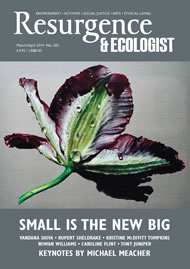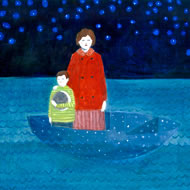At last year’s UN climate talks in Warsaw, delegates were moved to tears by the speech of Naderev Saño of the Philippines. Only a few days earlier his home city of Tacloban had been devastated by one of the largest cyclones ever recorded on land. Describing the link between climate change and the intensity of tropical storms, he called for an emergency drive to stabilise greenhouse gases. Two weeks of wrangling later, the word ‘commitment’ was dropped from key sections of the meeting’s final agreement because it was seen as too strong a term.
What do we do when we feel the sense of emergency expressed by people like Saño, yet see progress blocked at every step? When facing deeply-entrenched resistance to any breakthrough, it is easy to lose hope. Jane, one of the people I interviewed as part of my research on psychological responses to global issues, cared deeply about the world and was horrified by what she saw happening. But she regarded humans as a lost cause so stuck in our ways that she believed the devastation of our world was inevitable. “What’s the point in doing anything,” she exclaimed, “if it won’t change what we’re heading for?”
The word ‘hope’ has two meanings. The first involves hopefulness, where our preferred outcome seems reasonably likely. If we require this kind of hope before we commit to an action, our response gets blocked in areas where we don’t rate our chances too highly. That’s what happened for Jane, who felt so hopeless that she didn’t see the point of even trying.
The second meaning of hope is about desire. When Jane was asked what she’d like to happen in our world, without hesitation she described the future she hoped for, the kind of world she longed for so much it hurt. This kind of hope, where we know what we’d like or love to take place, can start us on a journey. But it is what we do with this hope that really makes the difference. Passive hope involves waiting for external agencies to create the future we desire. Active Hope is about becoming active participants in the story of bringing about what we hope for.
Active Hope is a practice. Like t’ai chi and gardening, it is something we do rather than have. It is a process we can apply to any situation, and it involves three key steps. First, we take in a clear view of reality; second, we identify what we hope for, in terms of the direction we’d like things to move in or values we’d like to see expressed; and third, we take steps to move ourselves or our situation in that direction.
Since Active Hope doesn’t require our optimism, we can apply it even in areas where we feel hopeless. The guiding impetus is intention. We choose what we want to bring about, act for or express. Rather than weighing up our chances and only proceeding if we feel hopeful, we focus on our intention and let that be our guide.
Active Hope is both a flow we can open to and a story that can happen through us. When we’re in the flow of this story, it enriches our sense of meaning and purpose in a way that can make our lives more satisfying. But how can we open up this flow and make it grow stronger?
Just as gardening and t’ai chi are practices we can learn and get better at, so too can we train ourselves in Active Hope. One approach to such training is the Work That Reconnects, a system of transformational practices and insights developed by Joanna Macy and colleagues. It involves a strengthening journey round a spiral of four stages. This journey is often undertaken in experiential workshops lasting a weekend or more. We can also apply a briefer version as a practice by ourselves or with friends. Here is a short form that might only take 10 minutes:
The first port of call is Gratitude. See what words naturally follow a sentence that begins “For supporting me to live, I give thanks to…” If you are with a friend or a group, you might take it in turns with a couple of minutes each. If you are by yourself, you can fill a page in a notebook or speak out your thanksgiving. When we experience gratitude, we tend to feel more like giving back. This is a great way of mobilising motivation to act for our world.
The second step is to Honour our Pain for the World. Pain can act as an activating impulse, a wake-up call that alerts us to danger. An open sentence we can use here is “Looking at the future we’re heading into, concerns I have include…” Give yourself a couple of minutes, or, if writing, see if you can fill a page.
Motivated both by appreciation and alarm, the next stage of our journey involves opening to perspectives that help resource our response. We call this stage Seeing with New Eyes. For this, see what words follow a sentence that begins “Something that inspires me is…”
As we move round the spiral, the momentum builds and energises the final stage, Going Forth. This focuses attention on practical steps we can take. See what words follow “Something I’d love to do to make a difference is…” After giving yourself a couple of minutes on this, you can nudge your intention forward with a sentence that begins “A step towards this I will make in the next seven days is…”
One of the biggest factors influencing human behaviour is what we see others do. When people see us taking steps, they’re more likely to take them too. We can open up the flow of hope by inviting it to happen through us. It is a choice, it is our vote, and we can cast it every day.








